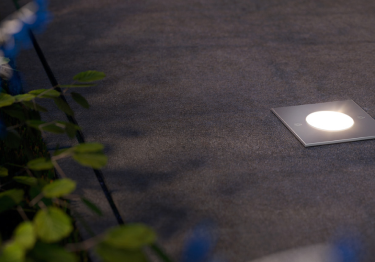Installing ground spots in the garden or on your terrace requires some caution. Floor uplighting has to be installed in such a manner that it is protected against moisture from the outside.
Especially the connection between the ground spot and the power has to be 100% watertight.
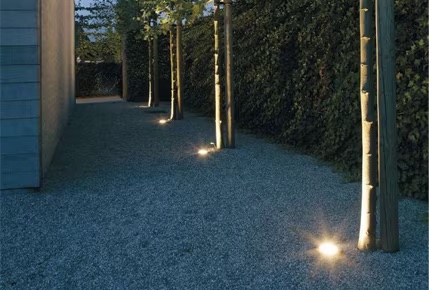
IP-value has to be sufficient
The first important aspect is the protection class of your floor uplighting. If you want to install them outside, they'll have to be protected against water and dust.
The grade of protection is indicated with an IP-value (International Protection). This value has two digits, the first being the protection against solids, the second is the protection against water and moisture.
Since ground spots are installed in a pretty vulnerable place in the soil, it's best to always respect a minimal IP-value of 68.
Water damage: common mistakes
Sometimes water still reaches the inside of the floor uplighters. This could happen for various reasons.
- The swivels on the recessed box for the ground spots aren't screwed tight enough.
- The glass on top of the ground spot isn't screwed tight enough. With a LED ground spot, you don't need to do this, since the light source and glass are already fixed.
- The junction box isn't filled with resin. This way, water can enter the junction box. From here, the water can reach the spot through the cable.
This happens under the influence of capillary attraction.
Reflect the light
Light always needs a surface to reflect it. Take the moon, for example, which we can only perceive thanks to the reflection of the sun’s light. This is the same for ground spots. If you shine a light into the air, it will have little or no effect. So always make sure that the light can reflect off an object, such as your home or a tree.
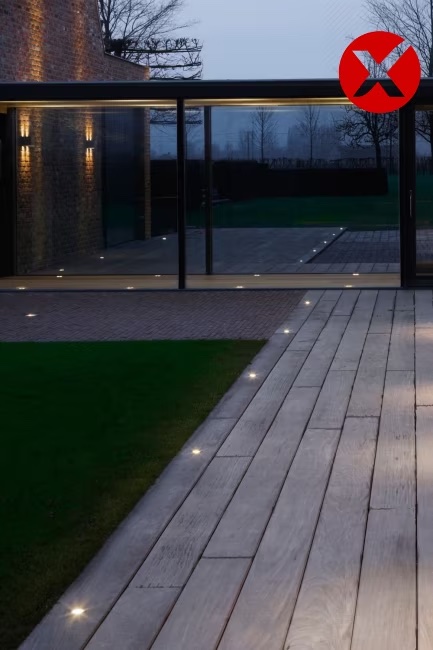
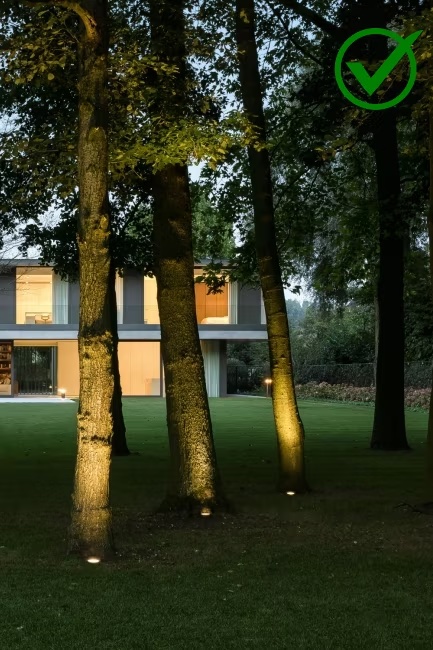
Location and subsoil
Ground spots always have a lot to endure. That's why it's best to install them in a well draining subsoil.
- Never install your ground spots in a den. Install them on a flat or a higher surface.
- Put a layer of 45cm gravel in the pit in which you're going to install your spot. This allows the rainfall to flow away faster and there's also less risk for rising groundwater.
Making watertight connections
For your ground spots to work, it has to be connected to the power. This connection needs extra protection against moisture.
Junction box with resin
The safest way to do this, is to make the connection inside the junction box and fill this up with resin. The casting resin will keep your connection and your floor uplighter completely free of water.
Making your connection in watertight connectors with swivels is another possibility. However, this option is less safe. Chances are that water will still find its way.
The cable of the ground spot runs to the junction box in which you make the connection. Through an EXVB cable the ground spot is subsequently connected to the mains. The EXVB cable has to be placed inside a TPC10 pipe into the ground. In the junction box you can also make a branch in order to provide current to different spots.
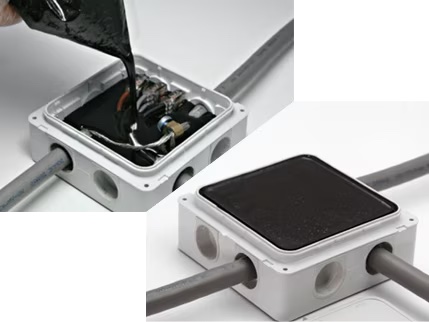
Test your connection!
Once the connection in the junction box is made and you've tested your spots multiple times, you can fill the junction box with resin. Mix the resin components and fill up the junction box to the edge, so that all cables and connectors are completely immersed. The resin takes about 15 minutes to dry out. Always use the included gloves when working with cast resin.
Attention: Don't forget to test your spots before casting the resin. Once the resin is solidified, you can't make anymore changes to your connection!
Flexible cable for connection
The cable of the ground spot with which you make the connection should be a waterproof, rubberised cable (e.g.: CTMB 3G1.5).
A flexible, rubber cable can be sealed against water much better. Indeed, when the cable gland of the ground spotlight is screwed onto the cable, the rubber sheath of the cable acts as a sealing ring (popularly known as a 'joint').
Nowadays, this cable is often already attached to the ground spot you buy. So you don't need to buy a separate cable in this case.
Caution: never remove the supplied cable from the ground spot! If you do, you will lose your warranty.
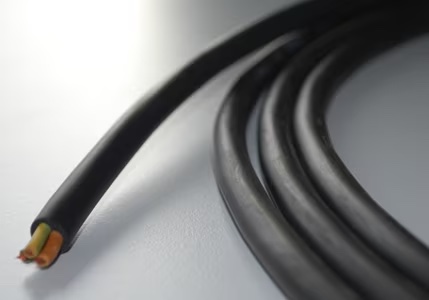
Checking CTMB cable for water damage
If you suspect that water has entered the cable, you can cut the cable open to check this.
The ground spot's CTMB cable contains a white powder underneath its isolation layer, which is evenly spread around the cable. If you cut the cable open and notice that the powder has clotted, isn't evenly distributed or has little lumps in it, this means water has reached the inside of the cable.
Buying ground spots at Peeq
Looking for ground spots for your garden or terrace? Find your choice amongst our extended range. Outdoor coziness guaranteed!

